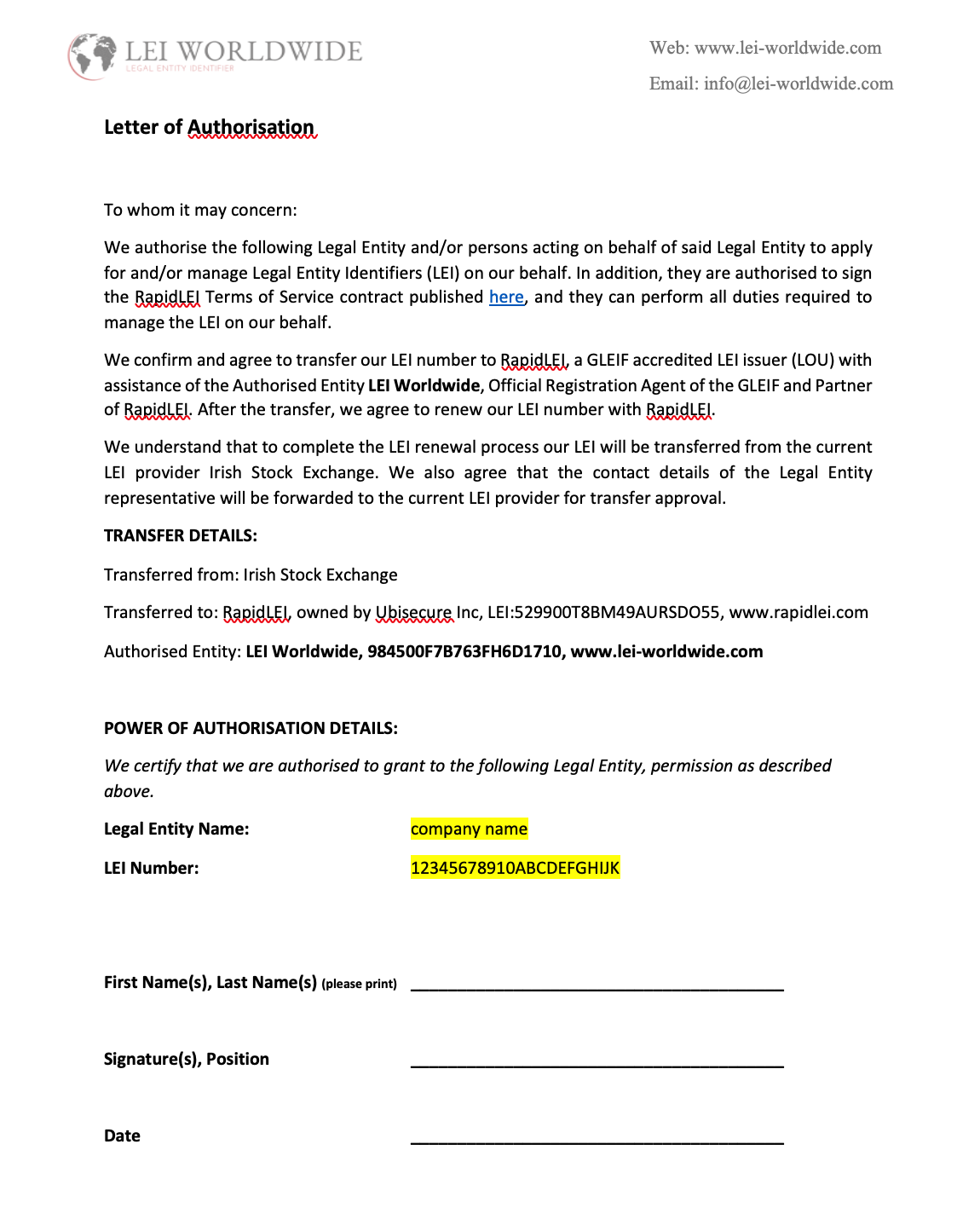LEI Registration
Documents Required
Certain legal entity documents are required in order to obtain a Legal Entity Identifier (LEI). This is to verify the company data and LE-RD Data Quality depends on it.
The LEI System relies on up to date, high quality data and to ensure accurate data populates the LEI index due dilligence goes into each LEI application.
What documents are needed for lei registration?
The global LEI system (GLEIS) consists of over 2 million LEI codes. Each LEI code is made up of unique LE-RD (legal entity reference data). This LE-RD is information about each company such as the name, number, address etc.
LE-RD must first be verified by checking the company documents which would be issued by the RA (Registration Authority).
For example, if one was applying for an LEI in the UK, then we would check the Companies House documents on file.
This would usually be a Certificate of Incorporation, however the documents may differ depending on company type, or legal jurisdiction.
In the Uited States, Delaware for example the LE-RD will be derived from the Delaware Secretary of Stae file number or Articles of Association.
The documents provided will need to verify the following:
- Company legal name
- Legal address
- Name of Authorised Signatory (Evidence of authority)
- Company ID number / file number / license number
- Name of issuing authority (e.g companies house)
- Date of Incorporation
In order to ensure any Open Data System contains high quality, reliable data it needs to be obtained from a trusted source. With regards to the LEI, the data in question is LE-RD which is commonly referred to as Level 1 data. Level 1 Data provides simple, business card information about a legal entity.
- LEI Worldwide
Please be aware that the documents required for LEI registration differ by jurisdiction and by entity type. A Fund for example can provide a prospectus, and a Trust may provide the Deed to the Trust.
Please see below a list of documents accepted and commonly provided during LEI applications:
- Certificate of Incorporation
- Certificate of Incumbency
- Articles of Association / Memorandum of Association
- Registry Extract or official filing
- Deed of Trust, Fund Prospectus etc
What other documents will i need to provide to get an lei?
1. Letter of Authorisation (LoA)
A Letter of Authorisation is a document confirming that the person applying for an LEI via LEI Worldwide is both authorised to sign on behalf of the entity and also grants LEI Worldwide permission to act on their behalf in respect of their EI requirements.
Any authorised person such as a Director, CEO or company representative can sign the LoA. A template will be provided by LEI Worldwide for signing. LoAs are commonly used for LEI Transfers or when renewing an LEI where the authorised signatory has changed from the previous year e.g change of Director.
2. Evidence of Authority (EoA)
An EoA is a document that confirms the position of the signer within the organisation or their authorisation to sign on behalf of said company. For example, a Register of Directors document lists the company Directors. If John Smith signs the LoA and is also listed on the Register of Directors this satisfies all requirements for the authorisation side of the LEI application.
An EoA will commonly be requested in all new LEI applications, and also all LEI transfers where an LoA needs to be signed.
3. Consolidated Accounts (Level 2 Data)
The Legal Entity Identifier system not only identifies legal entities, but also their organisational structures. Where a company reports Level 2 data evidence of the parent company is required by way of condsolidated accounts. The gGLEIF defines a parent as one who owns 50% or more of a legal entity and also consolidates accounts. A simole organisations tructure document will not satisfy this requirement a set of accounts is required.
Sample Letter of Authorisation (LoA)
To summarise, when applying for a Legal Entity Identifier the application must go through a necessary due dilligence process in order to satisfy the GLEIFs Data Quality controls. This process requires the submission of a set of particular documents that allow LEI Worldwide to verify the company information such as company name, company number, legal address etc. Each company or legal entity will have different documents depending on its jurisdiction oe entoty type. For example a Fund in Ireland will have a different set of formation documents than one in the U.S, and a LLC in the U.S will have separate docuemnt to a LTD based in the U.K.
During the LEI application process there is an upload box where you may upload these company documents and they will automatically be uploaded with the LEI application. Once they are reviewed and verified an LEI may be issued and will be uploaded to the global LEI index.
LEI requirements vary depending on the country, legal jurisdiction or industry. It is the prerogative of the authorities acting in individual jurisdictions to mandate the use of LEIs.
However it is up to the individual market participants to obtain their own LEI and ensure it is up to date and renewed annually. That is where LEI Worldwide can help. We can help you to renew an LEI, reactivate a lapsed LEI and transfer an LEI that is with another provider.
To find out if you need to have an LEI you can see this attachment which provides an overview of the official current and proposed regulatory activities which include the use of the LEI.
